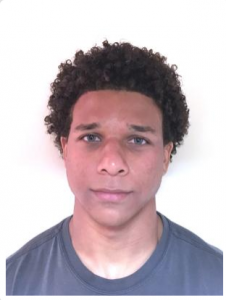Students

Zach Kelly
ORFE, 2020

TJ Floyd
ORFE, 2020

Parker Dixon
ORFE, 2020
Project Description
We engineered Slate Turkey Calls as good as any on the current market. In order to create a unique aesthetic design, we used an appropriate hard wood with a distinctive grain and density which will allow for better acoustics. A slate turkey call consists of 2 main parts: the friction enhanced body and the striker which is used to scratch the slate on the body to emulate the unique sound of a real-life turkey. In nature, turkeys communicate with a series of clicks and gobbles. Naturally, male turkeys (gobblers) send out a series of gobbles as they sit in their roost. The female turkeys (hens) respond with a series of clicks. The hen then approaches the location of the gobbler as they communicate throughout her journey. With a slate turkey call, one attempts to emulate these clicks. The clicks from the call must sound so irresistible to the gobbler, that he is convinced to leave his roost in pursuit of this flirting hen (us).
Technical Background
Slate turkey calls, otherwise known as friction turkey calls, consist of two parts: the striker and the body. The striker is a wooden tool that essentially looks like a screwdriver, with a handle and a thinner part with a flat end. The shape is made to be easily held, and the harder the wood, the louder the sound it will produce. The body is a circular wooden tool with a slate insert to rub the striker on. The hardness of the surrounding wood again affects the loudness of the call, with harder wood making the sound louder.
There are multiple sounds that can be made using this item and are dependent on user proficiency. The sounds are made by the friction created by dragging the thin end of the striker across the surface of the body with varying angles, speeds, and pressures, essentially making a more controlled “fingernails on a chalkboard” type sound. To use correctly, the user holds the striker much like a pencil, and is essentially drawing on the slate with the thinner end of the striker with slightly different techniques to get different sounds. The four main types of sounds made with this tool are the cluck, the yelp, the cut, and the purr. The yelp sound is made by holding the striker angled away from the user’s body at an approximately 20 degrees from perpendicular angle to the surface of the body, and “drawing” small ovals on the slate. Holding the striker slightly more perpendicular, applying more pressure, and moving the striker faster will produce a cut sound. With a cut, the striker is almost hopping across the surface, whereas making a yelp, the striker will never lose contact with the body. A cluck sound is made by doing the same motion as a cut, except with slightly less pressure and thus less friction between the surfaces. A purr is made by using the same technique as a yelp, except with more pressure from the striker. The yelp and cut sounds together, as well as the purr and cluck sounds, emulate a female turkey looking for a mate, thus attracting male gobblers.
CallExample Picture (For Background reference):
From: https://www.opticsplanet.com/maestro-butski-series-the-composer-slate-friction-turkey-call.htm
